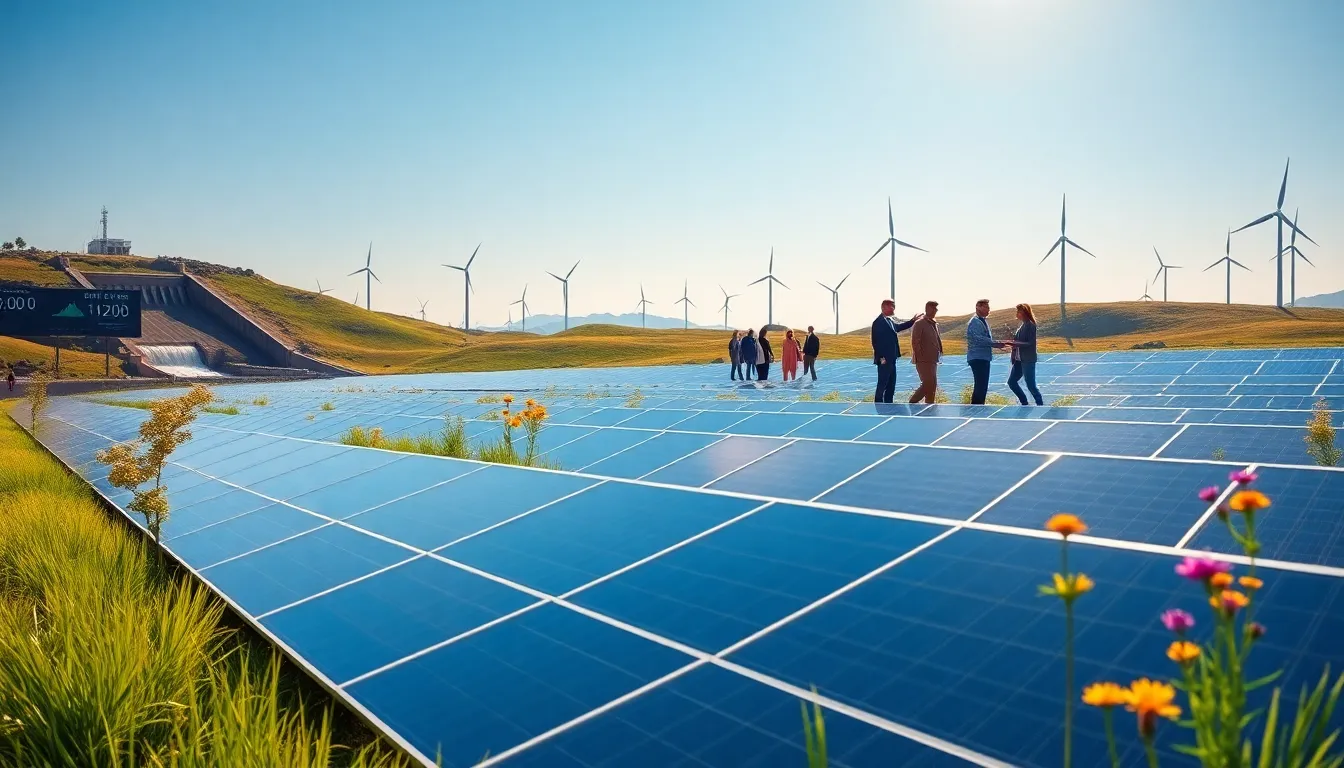In an age where technology pervades every aspect of existence, the concept of ‘lots of power’ emerges as a crucial cornerstone of contemporary life. From powering our devices to fueling industries, energy defines our capacity to innovate and sustain progress. This article delves into the various dimensions of power, its significance, and how it shapes our daily experiences, highlighting trends, challenges, and future directions in energy management.
Table of Contents
ToggleWhat Is Lots Of Power?

“Lots of power” refers to the abundant energy resources that are available to fulfill human needs. This phrase can encompass various forms of energy, including electrical power, renewable resources, and fossil fuels. In today’s context, it implies not only the quantity of energy but also its accessibility, reliability, and sustainability. Technology has amplified the ways in which this power is generated, favored by innovative advancements in renewable energy sources, such as solar, wind, and hydroelectric power, that promise a cleaner and more sustainable future.
Understanding what constitutes “lots of power” is essential for grasping its implications for both the environment and society. It’s a critical concept that enables nations to grow economically while addressing concerns about sustainability and global warming.
The Importance of Energy Sources
The diversity of energy sources available to humanity plays a pivotal role in shaping economies, environments, and communities. Traditional energy sources, such as coal, oil, and natural gas, have dominated for a century, providing substantial power but also contributing significantly to environmental degradation. In contrast, renewable energy sources are gaining traction due to their minimal environmental impact and their potential to provide loads of power sustainably.
The importance of energy sources lies not only in their ability to fuel technologies and industries but also in their role in national security, economic stability, and environmental sustainability. For example:
- Fossil Fuels: These sources remain integral to the global energy mix but face criticism due to their contribution to climate change.
- Renewable Energy: Solar and wind energy systems can generate abundant power with a reduced carbon footprint.
- Nuclear Energy: Although controversial, it offers a powerful option for generating large quantities of energy without direct carbon emissions.
The transition to cleaner sources is essential for reducing reliance on fossil fuels while meeting the increasing energy demand, especially in developing nations.
How Lots Of Power Influences Daily Life
In everyday scenarios, lots of power influences how individuals interact with technology and on a broader scale, how societies function. Consider the following areas:
Transportation
The transportation sector is heavily reliant on energy. With electric vehicles (EVs) becoming more mainstream, the shift from gasoline to electric power represents a significant transformation in daily commuting. The expansion of EV charging stations is making travel more convenient for those opting for renewable energy sources.
Home and Work Environments
Everyday appliances, from refrigerators to mobile chargers, fundamentally depend on electricity. A reliable supply of energy is crucial for comfortable living and efficient operation of businesses. Smart homes, equipped with IoT devices, allow for energy consumption optimization, showing how technology can better use available power.
Healthcare
Healthcare systems depend on lots of power for life-saving devices and technologies. Reliable energy is essential for hospitals to maintain operations, particularly in emergencies. Innovations in energy management can improve the resilience of healthcare infrastructures, especially in disaster-prone areas.
Innovations in Power Generation and Management
The landscape of energy generation and management is rapidly evolving. Innovations are centered around enhancing efficiency while reducing environmental impact. Here are notable advancements:
Smart Grids
Smart grids represent a significant leap forward in power management, enabling real-time data monitoring, which enhances efficiency and response times during energy demands.
Energy Storage
Innovations in battery technology, such as lithium-ion and solid-state batteries, are crucial for storing excess renewable energy, ensuring its availability during peak demand hours.
Decentralized Energy Production
Decentralized energy production allows consumers to generate their own energy, such as through rooftop solar panels. This shift not only reduces reliance on traditional grid systems but also empowers individuals to take charge of their energy consumption.
Challenges in Power Distribution and Consumption
Even though the advancements, challenges in power distribution and consumption persist. Key issues include:
Infrastructure Limitations
Aging infrastructure in many regions hinders the efficient distribution of power. Updating these systems can be costly and time-consuming but is essential for meeting increasing demand.
Energy Inefficiency
In many households and businesses, energy waste is a significant concern. Improving energy efficiency in appliances and industrial processes can reduce overall consumption and costs.
Regulatory Hurdles
Government policies and regulations can either help or complicate the transition to sustainable and efficient energy solutions. Navigating these complex regulations can be a barrier for innovators seeking to enter the market.
The Future of Lots Of Power
Looking ahead, the future of lots of power is poised for significant transformation. Several trends are emerging:
Continued Renewable Integration
The shift towards integrating renewable energy sources into the mainstream will continue, driven by declining costs and technological improvements.
Electrification of Industries
Electrification will gain momentum in various sectors, including heavy industries, to reduce reliance on fossil fuels and lower carbon emissions.
Global Collaboration
Tackling energy challenges requires global collaboration. Countries will increasingly work together to share technology, resources, and innovations aimed at achieving sustainable energy goals.
Conclusion
The concept of “lots of power” significantly shapes modern life, influencing everything from daily conveniences to global economies. As society pushes toward sustainable practices, the importance of understanding energy sources, distribution challenges, and future innovations becomes even more critical. The embrace of renewable energy and technological advancements will not only meet rising demands but also pave the way for a more sustainable future. By acknowledging the role of power in daily life, individuals, industries, and governments can work collectively toward impactful energy solutions.





